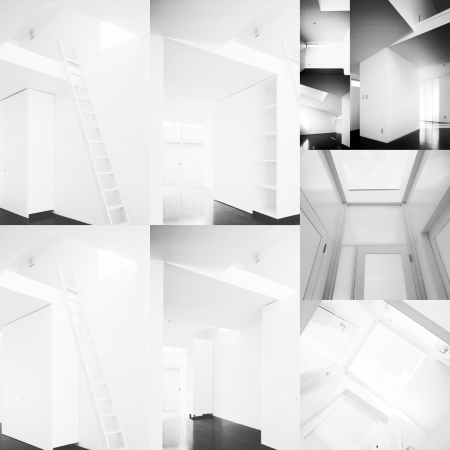変容する素の空間
ぼんやりと視点を合わせず空間を見てやれば、物体の陰影だけが見えてくる。視点を合わせれば、それが何であるのかは過去の記憶からわかるが、視点を合わせなければ、ただの出っこみ引っ込みであり、その出っこみ引っ込みに特徴があるだけである。
人が空間を認識する時、瞬時に視点を合わせて、その場の状況を判断するのだろうけれど、その前の0.何秒かは視点の合わない状態、物体の陰影だけが見え、その出っこみ引っ込みしか見えない状況がある。
その状況は、空間が本来あるべき姿として認識されていない状態ではあるが、空間の骨格というか、余計な装飾が剥ぎ取れた素の状態でもある。
その素の状態はむしろ、デザインとして、つくり出したい状態でもあるのではないか、その状態で空間が成り立つのならば、その後は、どの様にでも、素だから、変容できる空間ということになるのかと考えてみた。
"Transforming elementary space"
If you look at the space without blurring the viewpoint, only the shadow of the object will be visible. If you match the viewpoint, you can understand what it is from the past memory, but if you do not match the viewpoint, it is just a depression and retraction, and the depression and retraction is only characteristic.
When a person perceives a space, he or she will instantly adjust the viewpoint and judge the situation at that moment, but in the 0 second before that, the viewpoint is not aligned, only the shadow of the object can be seen, There are situations in which you can only see in and out.
The situation is that the space is not recognized as it should be, but it is also the skeleton of the space, or the elementary state where extra decorations have been stripped off.
Isn't that elementary state rather a state that we want to create as a design, and if space can be established in that state, then, after all, it will be a space that can be transformed because it is elementary. I thought.

